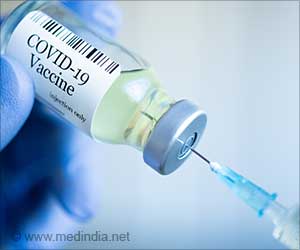
‘COVID-19 has disproportionately affected people from different racial and ethnic groups, those who are from under-resourced populations and communities that face historic or systemic disadvantages. Discussions and research are on-going to address what many experts label as long-existing inequities in the U.S. health system and thus the pandemic has enabled the magnification of health inequities for people with high blood pressure.’
Tweet it Now
"Media coverage has examined how and why COVID-19 is disproportionately impacting communities of color to some degree. However, it is critical that we continue to examine and explain the degree to which the pandemic has widened the divide among race/ethnic and class groups in the U.S. and exposed the systemic and institutional cracks in our health care system in terms of health care equity for people who are under-represented and populations that face disadvantages. COVID-19 has also reminded us that when we design interventions, it is important to consider health equity from the beginning rather than as an afterthought," says Adam Bress, Pharm.D., M.S., lead author of the paper, an associate professor of population health science in the Division of Health System Innovation and Research at the University of Utah School of Medicine in Salt Lake City and an investigator at the VA Salt Lake City Health Care System. Health Inequities during COVID-19
The panel of frontline clinicians, researchers, and leaders from diverse backgrounds discussed how the pandemic has worsened inequities in blood pressure control and also highlighted the environmental and socioeconomic factors contributing to disparities within the health care system, as well as strategies to help close the gap going forward.
One of the large nationwide study of over 50,000 adults indicated the number of people maintaining healthy blood pressure levels had been declining even prior to the pandemic, with lack of health insurance and access to health care being key factors.
High blood pressure is defined as a measure of blood pressure greater than 140/90 mm Hg in the study (the current American Heart Association guidelines define high blood pressure as 130/80 mm Hg). It found that from 2017-2018, only 22% of uninsured people in the study had healthy blood pressure levels, compared to 40-46% of the people who had some form of health insurance.
Advertisement
One nationally representative audit of practices in the U.S. shows that during the second quarter of 2020, new health care visits for the purpose of managing high blood pressure, both in-person and virtual, decreased by 39% compared to the same quarter in 2018 and 2019.
Advertisement
The Shift in Health Care
The COVID-19 pandemic caused a substantial shift in health care for hypertension - from in-person office visits to primarily virtual appointments. As the number of virtual health care appointments increased substantially since March 2020, many patients did not have access to validated home blood pressure monitors to regularly check their blood pressure.
The lack of access to health care needs was among the challenges faced during the pandemic. Another study determined clinicians' biases about their perceptions of medical agreeableness or acceptance of medication recommendations among Black patients versus white patients that potentially had a negative effect on which treatment options were offered and/or implemented.
Clinical inertia -- clinicians' failure to initiate or intensify antihypertensive therapy when blood pressure goals are unmet -- can also result in high rates of inadequate blood pressure control.
It is observed that community-based interventions can help to foster patient trust and improve health care access. One trial highlighted was the highly successful BARBER trial, where barbershops in predominantly Black neighborhoods in Los Angeles encouraged people 1) to meet with pharmacists embedded in the BARBER shops regularly to discuss and manage their blood pressure, or 2) promoted healthy lifestyle choices with routine care by a physician.
At six months, people who participated in the pharmacist-led intervention achieved a 21.6 mm Hg greater reduction in systolic blood pressure and had a 51.9% greater increase in blood pressure control compared to those who did not receive any intervention. At 12 months, the results were sustained.
One analysis found that among all blood pressure trials registered in the U.S. at ClinicalTrials.gov, only 5.4% had enrolled exclusively Black adults. This suggests there are few interventions and therapies being studied and designed specifically for Black adults with hypertension.
"Too often, individuals are blamed for their health care conditions, without considering the multiple levels of social factors and context that contribute to persistent and pervasive health inequities. Health inequities are a social justice issue. We need to be more direct and honest about the reasons for health disparities today and commit to structural solutions to begin to address them. These factors include historic structural and interpersonal racism; the different lived experiences for people of color and other groups facing disadvantages; the unacceptably low levels of public investment in public health, universal health care, and science; and the long-term effects of unequal access to affordable and high-quality health care among many others. We need to ensure that these meaningful conversations and changes in policy, research, health care and education persist after the COVID-19 pandemic in order for there to be sustained progress in achieving greater health equity," says Bress.
Source-Medindia










